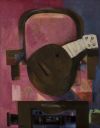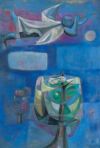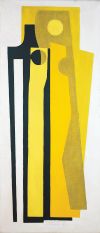Diferencia entre revisiones de «Banco de la República Art Collection»
| Línea 22: | Línea 22: | ||
[[Archivo:AP0002-angel-volando-en-la-noche-cecilia-porras.jpg|100px|thumb|left|Ángel volando en la noche (Angel Flying in the Night. Foto: Cecilia Porras ]] | [[Archivo:AP0002-angel-volando-en-la-noche-cecilia-porras.jpg|100px|thumb|left|Ángel volando en la noche (Angel Flying in the Night. Foto: Cecilia Porras ]] | ||
[[Archivo:AP0003-el-dorado-2-eduardo-ramirez-villamizar.jpg|100px|thumb|left|Ángel volando en la noche (Angel Flying in the Night. Foto: Cecilia Porras ]] | [[Archivo:AP0003-el-dorado-2-eduardo-ramirez-villamizar.jpg|100px|thumb|left|Ángel volando en la noche (Angel Flying in the Night. Foto: Cecilia Porras ]] | ||
[[Archivo:AP0005-santa-marta-edward-walhouse-mark.jpg|100px|thumb|left| | [[Archivo:AP0005-santa-marta-edward-walhouse-mark.jpg|100px|thumb|left|Santa Marta. Foto: Edward Walhouse Mark ]] | ||
According to José Darío Uribe, general manager of Banco de la República in the early twenty-first century, "the main impulse in establishing these collections has not been the desire to amass, but rather the interest in preserving and making available to all Colombians works of art that contribute to the intellectual development of the country.” | |||
Among the first acquisitions, it is worth mentioning a series of watercolors by the British landscape painter and artist Edward Walhouse Mark, from which the collection of nineteenth century travelers was begun, and which at the same time reflects another of the objectives that Banco de la República set for itself with the development of the collection: to gather a set of historical and representative pieces of national art that would provide a complete idea of what Colombian visual art has been from colonial times to the present. | |||
Similarly, in the early years of the collection, one of the priorities was to include works by young artists, winners of art salons, or active figures in the local art scene. According to the critic Juan Manuel Ospina, "more than certainties there were clear hopes in relation to these artists, that time would transform into the Colombian masters of the twentieth century: Fernando Botero, Enrique Grau, Edgar Negret, Alejandro Obregón, Cecilia Porras, Eduardo Ramírez Villamizar, Carlos Rojas, and Guillermo Wiedemann" (Juan Manuel Ospina, Permanent Collection of Paintings, Banco de la República, 1985). Later, and following this particular interest, in the eighties, nineties, and noughties, names such as Bernardo Salcedo, María Fernanda Cardoso, Santiago Cárdenas, María Teresa Hincapié, José Antonio Suárez, Liliana Angulo, and Luis Caballero would be included | |||
[[Archivo:P0200-cabeza-de-hombre-llorando-oswaldo-guayasamin.jpg|100px|thumb|left|Cabeza de hombre llorando (Head of a Crying Man). Foto: Edward Oswaldo Guayasamín ]] | |||
In November 1960, the first work was acquired from a foreign artist, Oswaldo Guayasamín's Cabeza de hombre llorando (Head of a Crying Man), thus making the collection international. According to the critic Carolina Ponce de León, this new interest was "an initiative that translated into individual and collective exhibitions that were registered, in those first years, with the acquisition of works by José Luis Cuevas, Roberto Matta, Manuel Felguerez, Fernando de Szyszlo, Armando Morales, Abularach, and Vicente Rojas, among others" (Carolina Ponce de León, Anthology of Works from the Permanent Collection, Banco de la República, 1990). | |||
==A committee for the growth of the collection== | |||
Between 1984 and 1985, with the restructuring of the Cultural Division, the Banco de la República established an advisory committee for the visual arts made up of artists, cultural managers, art critics, and historians. The committee established the parameters to be followed in the acquisition of new works, a strategy that sought to optimize purchasing tactics and acquire pieces that would allow it to illustrate the gradual development of art. | |||
According to Carolina Ponce de León, "forming a collection is an activity that is to some extent random: it depends largely on the opportunities offered by the market and therefore it is difficult to systematically fill gaps. [...] In the case of the Banco de la República Art Collection, there is a tendency towards three main fronts: the first is to complete the collection of nineteenth century works. To this end, costumbrista watercolors by Ramón Torres Méndez, miniatures by José María Espinosa, and graphic works by Alberto Urdaneta were acquired. [...] The second front are twentieth century creations of historical and artistic interest, for instance the decision to include Débora Arango, Darío Jiménez, and José Rodriguez Acevedo, artists who were not recognized for their artistic merit in their time. [...] The third front addresses the works of artists from more recent generations, who, among others, have been nourished by the works of the participants in the Nuevos Nombres (New Names) program" (Carolina Ponce de León, Anthology of works from the permanent collection, Banco de la República, 1990). | |||
==The Botero donation== | |||
Another reason for the increase of the collection has been donations made by private collectors. The most generous by a distance was that of the artist from Antioquia Fernando Botero in the year 2000. Botero donated 123 of his own works and 85 by international artists. These pieces, permanently exhibited at the Botero Museum, provide a comprehensive idea of the progress of modern painting and sculpture. The collection brings together such outstanding artists as Picasso, Leger, Renoir, Monet, Dalí, Giacometti, Beckmann, Freud, Calder, and Bacon, the oldest work being Gitane au tambourin (prior to 1862) by Camille Corot, and the most recent the great oil painting by Barceló (1998). | |||
A collection beyond borders | |||
Miguel Urrutia Montoya, general manager of Banco de la República from 1993 to 2004, wrote that "in recent years we have managed to acquire international works that improve the representativeness of the Art Collection. Among them are an Amelia Pelaez, a Xul Solar, two works by Morandi, a donation of six eighteenth century landscapes, several Japanese woodcuts, two landscapes by Jan Van Kessel, and a Le Parc" (Miguel Urrutia Montoya, Banco de la República International Art Collection, Villegas Editores, 2004). The collection also includes drawings ranging from the Renaissance to Derain and Tobey, and small format works by Klee and Kandisky. | |||
Revisión del 09:18 31 ago 2021
| Fecha de nacimiento | 12 de septiembre de 1939 |
|---|---|
| Nacionalidad | Colombiana |
| Ocupación | Artista |
The Banco de la República Art Collection is one of the largest collections in the country. After over six decades of rigorous and continuous collecting, today it holds more than 6,000 works by Colombian, Latin American, and international artists. This collection has grown thanks to the annual acquisition program and the various donations it receives. The most significant donation was made by the master painter Fernando Botero.
History
Beginnings and first acquisitions
The Banco de la República Art Collection began in November 1957 with the acquisition of three works: Mandolina sobre silla (Mandolin on Chair) by Fernando Botero, Ángel volando en la noche (Angel Flying in the Night) by Cecilia Porras, and El Dorado No. 2 by Eduardo Ramírez Villamizar, pieces included in the exhibition Modern Art Salon organized by Banco de la República at the Luis Ángel Arango Library, then recently inaugurated.




According to José Darío Uribe, general manager of Banco de la República in the early twenty-first century, "the main impulse in establishing these collections has not been the desire to amass, but rather the interest in preserving and making available to all Colombians works of art that contribute to the intellectual development of the country.” Among the first acquisitions, it is worth mentioning a series of watercolors by the British landscape painter and artist Edward Walhouse Mark, from which the collection of nineteenth century travelers was begun, and which at the same time reflects another of the objectives that Banco de la República set for itself with the development of the collection: to gather a set of historical and representative pieces of national art that would provide a complete idea of what Colombian visual art has been from colonial times to the present. Similarly, in the early years of the collection, one of the priorities was to include works by young artists, winners of art salons, or active figures in the local art scene. According to the critic Juan Manuel Ospina, "more than certainties there were clear hopes in relation to these artists, that time would transform into the Colombian masters of the twentieth century: Fernando Botero, Enrique Grau, Edgar Negret, Alejandro Obregón, Cecilia Porras, Eduardo Ramírez Villamizar, Carlos Rojas, and Guillermo Wiedemann" (Juan Manuel Ospina, Permanent Collection of Paintings, Banco de la República, 1985). Later, and following this particular interest, in the eighties, nineties, and noughties, names such as Bernardo Salcedo, María Fernanda Cardoso, Santiago Cárdenas, María Teresa Hincapié, José Antonio Suárez, Liliana Angulo, and Luis Caballero would be included
In November 1960, the first work was acquired from a foreign artist, Oswaldo Guayasamín's Cabeza de hombre llorando (Head of a Crying Man), thus making the collection international. According to the critic Carolina Ponce de León, this new interest was "an initiative that translated into individual and collective exhibitions that were registered, in those first years, with the acquisition of works by José Luis Cuevas, Roberto Matta, Manuel Felguerez, Fernando de Szyszlo, Armando Morales, Abularach, and Vicente Rojas, among others" (Carolina Ponce de León, Anthology of Works from the Permanent Collection, Banco de la República, 1990).
A committee for the growth of the collection
Between 1984 and 1985, with the restructuring of the Cultural Division, the Banco de la República established an advisory committee for the visual arts made up of artists, cultural managers, art critics, and historians. The committee established the parameters to be followed in the acquisition of new works, a strategy that sought to optimize purchasing tactics and acquire pieces that would allow it to illustrate the gradual development of art. According to Carolina Ponce de León, "forming a collection is an activity that is to some extent random: it depends largely on the opportunities offered by the market and therefore it is difficult to systematically fill gaps. [...] In the case of the Banco de la República Art Collection, there is a tendency towards three main fronts: the first is to complete the collection of nineteenth century works. To this end, costumbrista watercolors by Ramón Torres Méndez, miniatures by José María Espinosa, and graphic works by Alberto Urdaneta were acquired. [...] The second front are twentieth century creations of historical and artistic interest, for instance the decision to include Débora Arango, Darío Jiménez, and José Rodriguez Acevedo, artists who were not recognized for their artistic merit in their time. [...] The third front addresses the works of artists from more recent generations, who, among others, have been nourished by the works of the participants in the Nuevos Nombres (New Names) program" (Carolina Ponce de León, Anthology of works from the permanent collection, Banco de la República, 1990).
The Botero donation
Another reason for the increase of the collection has been donations made by private collectors. The most generous by a distance was that of the artist from Antioquia Fernando Botero in the year 2000. Botero donated 123 of his own works and 85 by international artists. These pieces, permanently exhibited at the Botero Museum, provide a comprehensive idea of the progress of modern painting and sculpture. The collection brings together such outstanding artists as Picasso, Leger, Renoir, Monet, Dalí, Giacometti, Beckmann, Freud, Calder, and Bacon, the oldest work being Gitane au tambourin (prior to 1862) by Camille Corot, and the most recent the great oil painting by Barceló (1998). A collection beyond borders Miguel Urrutia Montoya, general manager of Banco de la República from 1993 to 2004, wrote that "in recent years we have managed to acquire international works that improve the representativeness of the Art Collection. Among them are an Amelia Pelaez, a Xul Solar, two works by Morandi, a donation of six eighteenth century landscapes, several Japanese woodcuts, two landscapes by Jan Van Kessel, and a Le Parc" (Miguel Urrutia Montoya, Banco de la República International Art Collection, Villegas Editores, 2004). The collection also includes drawings ranging from the Renaissance to Derain and Tobey, and small format works by Klee and Kandisky.
